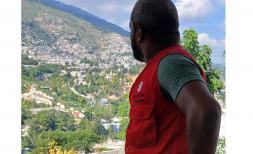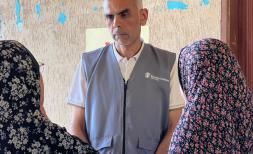Poorest Children Paying the Price of the Climate Crisis

The Climate Crisis is pushing the Sustainable Development Goals (SDGs) out of reach - with the poorest children already worst affected. We have a decade to achieve the SDGs – and the climate crisis will make it harder to achieve those goals and the pledge to leave no-one behind [1]. Numerous studies have pointed out that the people bearing the heaviest burden are the poorest and most marginalised children and their families. Thanks to the child-led “Fridays for Future” movement – we are increasingly hearing children’s voices [2] – and we need to respond. In responding, this blog suggests building on what we know works to address poverty and exclusion - particularly cash grants for families on the frontline.
Reducing emissions is fundamental – but we must also help those who contribute least to cope with the impacts. While the world is, finally, waking up to the urgent need to reduce greenhouse gas emissions and "capture" carbon (whether through planting trees or higher tech solutions) – we must also fund efforts to help the poorest adapt to climate impacts – ensuring children survive, learn and are protected. The poorest and most marginalised communities on this planet have contributed the least to the problem (see graphic below using World Bank data for 2018 showing countries like Somalia and Malawi with lowest emissions per capita) – but are on the frontline of the devastating impacts.

Child Rights at risk – Save the Children staff see the impacts of the climate crisis first hand every day. Girls are kept from school because more time is needed for household chores like fetching water. Boys and girls suffer from malnutrition when families have to cut food intake when crops fail [3]. On a recent visit to Somalia I met many children whose families have been forced to move to camps in urban areas, as increasingly frequent and severe droughts make traditional livelihoods untenable. We all know how precious childhood is – that is why almost every nation on earth has ratified the Convention on the Rights of the Child. Development professionals know too the irreversible, life-long, economic, health and social impacts of children missing school and suffering from malnutrition. The window of opportunity we have during childhood is so important to break the intergenerational cycle of poverty – surely this is the most important social justice aspect of the climate crisis?
We must do things that work! So while working to reduce emissions, we must not take our eyes off the ball in meeting other SDG targets, particularly for the poorest. We must fulfil the rights of all children - particularly girls [4] and other children who are more marginalised or deprived– so they can achieve their potential despite the growing threat of the climate crisis. But how?
There are a huge variety of solutions – too many for this first blog. But let me highlight just one cost effective solution with huge potential to be scaled up – shock responsive and child-sensitive social protection – basically putting more cash into the hands of vulnerable families. Save the Children and our partners have developed strong evidence of the impact of child benefits and other social protection entitlements – particularly if linked to behavioural ‘nudges’ – for example to encourage girls to stay in school, or to support better nutrition [5]. Cash transfers, often targeting mothers, can be increased during droughts, or expanded to include more families if they are suddenly affected by floods or other extreme events [6]. Technology, like mobile phones, can improve accountability, targeting and reach, and help families link to other services – from clinics to banks. I had the privilege of seeing these in action in countries from Bangladesh to Ethiopia – and have been inspired by the women I’ve met, taking relatively small sums of money and investing wisely in their children, their communities and their future. We know what works. We just need to do more, faster, and keep putting the rights of children at the frontline into the headlines.
[2] The most prominent voices are not always from the poorest countries or communities – however the movement is truly global, as we can see from the Twitter feed supporting solo-strikers
[3] A wide range of studies back these findings up – including the World Bank report Shock Waves and the most recent report by Lancet, WHO and UNICEF
[4] A future blog will focus more explicitly on both the gendered impacts of climate change, and the transformational role girls and women can play in addressing the climate crisis.
[5] Save the Children work with partners, including our co-chair UNICEF in the Global Coalition to End Child Poverty to promote child sensitive social protection as a key tool to end multi-dimensional child poverty







